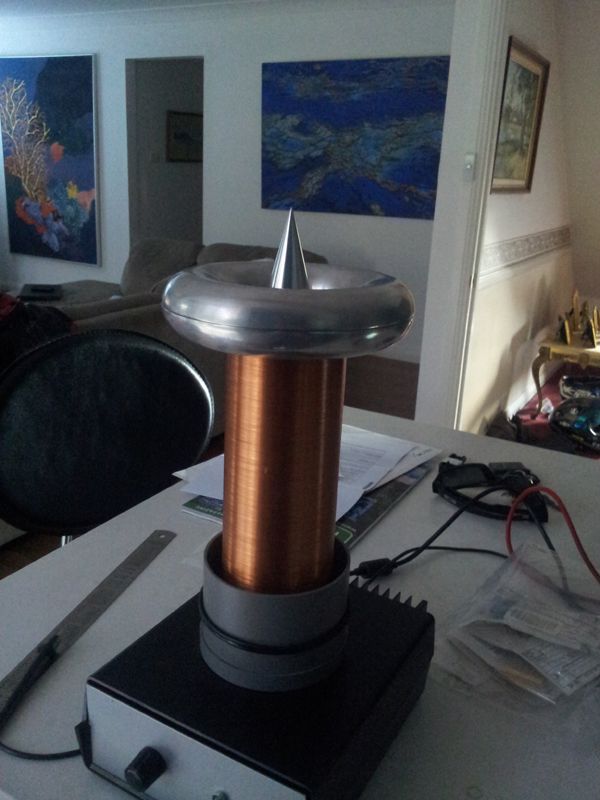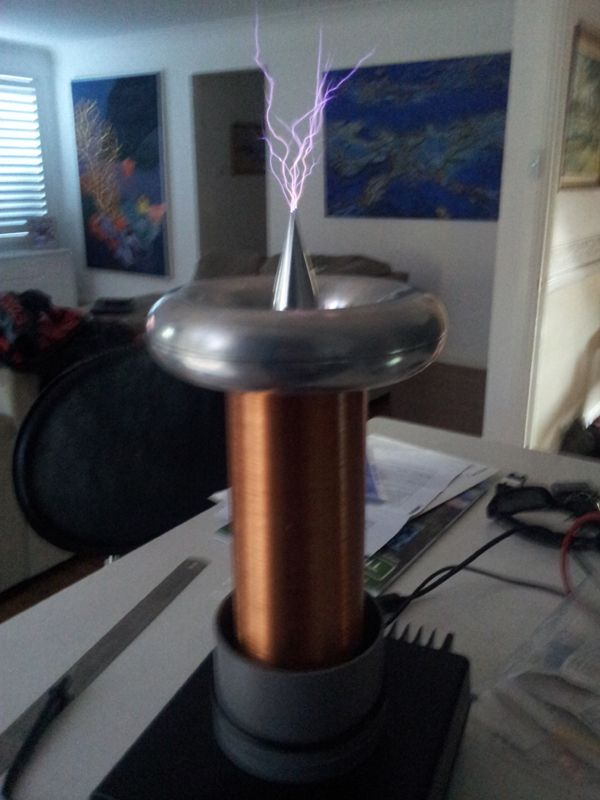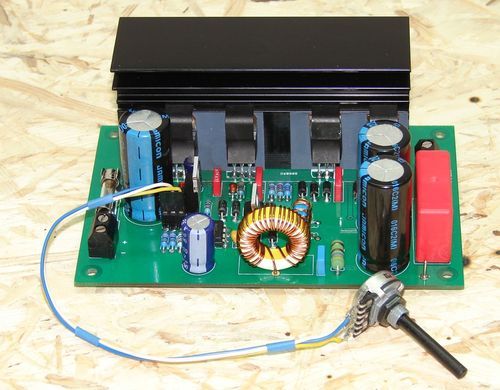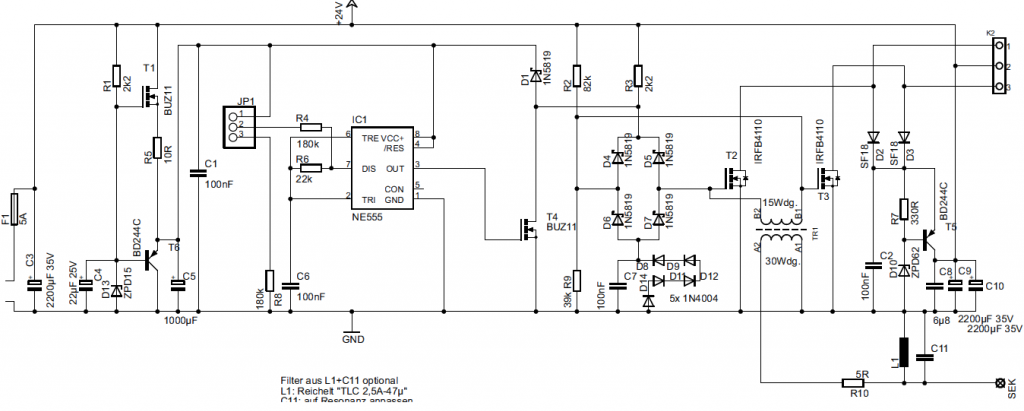Fiddy
0
- Joined
- May 22, 2011
- Messages
- 2,726
- Points
- 63
Hey Guise,
Heres a SSTC i bought off eBay a while ago,
It runs off 24VDC from a 5A wall supply.


It has a pot on the front to control the PRF only.

It came with a smaller toroid, about 4" diameter and it didn't look real nice, ive installed a 6" spun toroid since and a break out spike, since ive changed the toroid im having trouble with the the power mosfets dying and the PRF control only fires when the PRF pot is wound up high.
I know the bigger toroid will lower the resonant frequency of the primary, so ive changed the capacitor on the PCB to lower the primary's resonant frequency to suit.
I have a scope to measure stuff, im not sure how to measure the resonant frequency of the secondary,
If you have some experience in the SSTC feild and have some suggestions id like to hear them!
Fiddy.
Heres a SSTC i bought off eBay a while ago,
It runs off 24VDC from a 5A wall supply.


It has a pot on the front to control the PRF only.

It came with a smaller toroid, about 4" diameter and it didn't look real nice, ive installed a 6" spun toroid since and a break out spike, since ive changed the toroid im having trouble with the the power mosfets dying and the PRF control only fires when the PRF pot is wound up high.
I know the bigger toroid will lower the resonant frequency of the primary, so ive changed the capacitor on the PCB to lower the primary's resonant frequency to suit.
I have a scope to measure stuff, im not sure how to measure the resonant frequency of the secondary,
If you have some experience in the SSTC feild and have some suggestions id like to hear them!
Fiddy.






